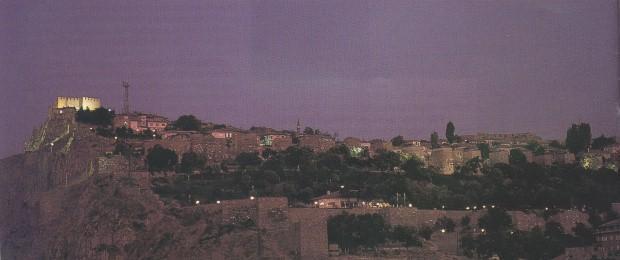Ankara Citadel: The foundations of the citadel were laid by the Galatians on a prominent lava outcrop, and completed by the Romans; the Byzantines and Seljuks made restorations and additions. The area around and inside the citadel is the oldest part of Ankara and many fine examples of traditional architecture can be seen within the citadel walls. There are also lovely green areas in which to relax. It's well-known that the Ankara region was the cradle of "vino" (Hatti and Hittite) in 2,000 B.C.; many restored traditional Turkish houses in the area of the citadel have found new life as restaurants,serving local and international dishes and wine.
Roman Theatre: The remains, including proscene (stage), and scene (backstage), can be seen outside the citadel. Roman statues found here are exhibited in the Anatolian Civilizations Museum.The audience area is still under excavation.
Temple of Augustus: The temple can be found in the Ulus quarter of the city. It was built by the Galatian King Pylamenes in 10 A.D. as a tribute to Augustus, and was reconstructed by the Romans on the ancient Ankara Acropolis in the 2nd century. It is important today for the 'Monument Ancyranum', the sole surviving "Political Testament" of Augustus, detailing his achievements, that is inscribed on its walls in Latin and Greek. In the 5th century the temple was converted to a church by the Byzantines.
Roman Bath: The bath, situated on Cankiri Avenue in Ulus, has the typical features of Roman baths: a frigidarium (cold section), tepidarium (cool section) and caldarium(hot section). They were built in the time of the Emperor Caracalla (3rd century A.D.) in honour of Asclepios, the god of medicine. Today, only the basement and first floors remain.
Column of Julian: This column, in Ulus, was erected in 362 A.D., probably to commemorate a visit by the Roman Emperor Julian the Apostate. It stands fifteen meters high and has a typical leaf decoration on the capital.
Monument of the Republic: Erected in 1927, in Ulus Square, as a symbol of Ataturk's and the Turkish people's struggle for independence in the War of Liberation.
Monument to a Secure Confident Future:This monument, in Guven Park, was erected in 1935 and bears Ataturk's words to his people: "Be proud, hardworking, and believe in yourself."
Victory Monument: Erected in 1927, on Zafer Square in the Sihhiye quarter, it shows Ataturk in uniform.
Hatti Monument: Recently erected in Sihhiye square, this impressive monument shows symbols of the Hatti gods, and commemorates Anatolia's first-known people.
|





